In the upcoming edition of Women’s Olympic Football, Canada will participate in Group A with France, Colombia and New Zealand.
After suffering a quarter-final defeat in their maiden tournament appearance in 2008, Canada won back-to-back bronze medals at London 2012 and Rio 2016.
Then came their crowning glory at Tokyo 2020.
They beat Brazil in the last eight and their neighbours, the United States, in the semis to set up a gold medal showdown with Sweden.
A tense final finished 1-1 after extra time, meaning penalties were required to separate the teams.
Canada prevailed in the shootout, with Julia Grosso’s spot-kick clinching a historic victory.
Canada will seek to emulate the United States and become the second nation to triumph at back-to-back Women’s Olympic football tournaments.
In the latest Women’s World Ranking, they are in eighth place, meaning that they should do their best to keep their glory or at least get a silver or bronze medal.
Still, fans are worried because they exited at the group stage in the previous World Cup.
“We’re naturally humble as a team and, given the World Cup we had, we’re not going into these Olympics thinking that we have a big target on our back as the reigning champions.
It’s all about focusing on being the best version of ourselves that we can be.
The rest will take care of itself.
Having said all that, we want to be on that podium again, and we’ll be doing everything in our power to get there” —coach Beverly Priestman said.
In the form of a tactical analysis, this scout report will provide a detailed analysis of Canada’s tactics under Beverly Priestman.
Predicted starting XI
Canada usually rely on the 3-4-3 formation as a foundation, with three centre-backs, two wing-backs, two midfielders, three forwards, two inside wingers and the centre-forward, as shown in the graph below.
In goalkeeping, the choice ranges between Kailen Sheridan and Sabrina D’Angelo.
However, Kailen Sheridan will probably be Canada’s number one between the sticks.
Beverly Priestman relies on three centre-backs, who will probably be Jade Rose, Vanessa Gilles, and Kadeisha Buchanan, from right to left.
Regarding the two flying wing-backs, the coach switched between wingers and full-backs to achieve balance, defend or attack regarding the opponent and the match conditions.
Still, we think that Ashley Lawrence and Jayde Riviere will probably be the first choices.
The first choices as the two central midfielders will remain Jessie Fleming and Julia Grosso, but Simi Awujo may fight Grosso for the second position in midfield next to Fleming.
They have many diverse choices in the three forward positions as most of them play in many positions as a striker or a winger, which is good for the team, increasing the choices and fluidity in the game.
Still, we think that Aston Villa’s player, Adriana Leon, will be the first choice as the centre-forward despite being a winger.
As the right and left inside wingers, we think Janine Beckie and Cloé Lacasse will be the first choices, considering that Jordyn Huitema, Evelyne Viens and Deanne Rose may fight for a place in the starting XI.
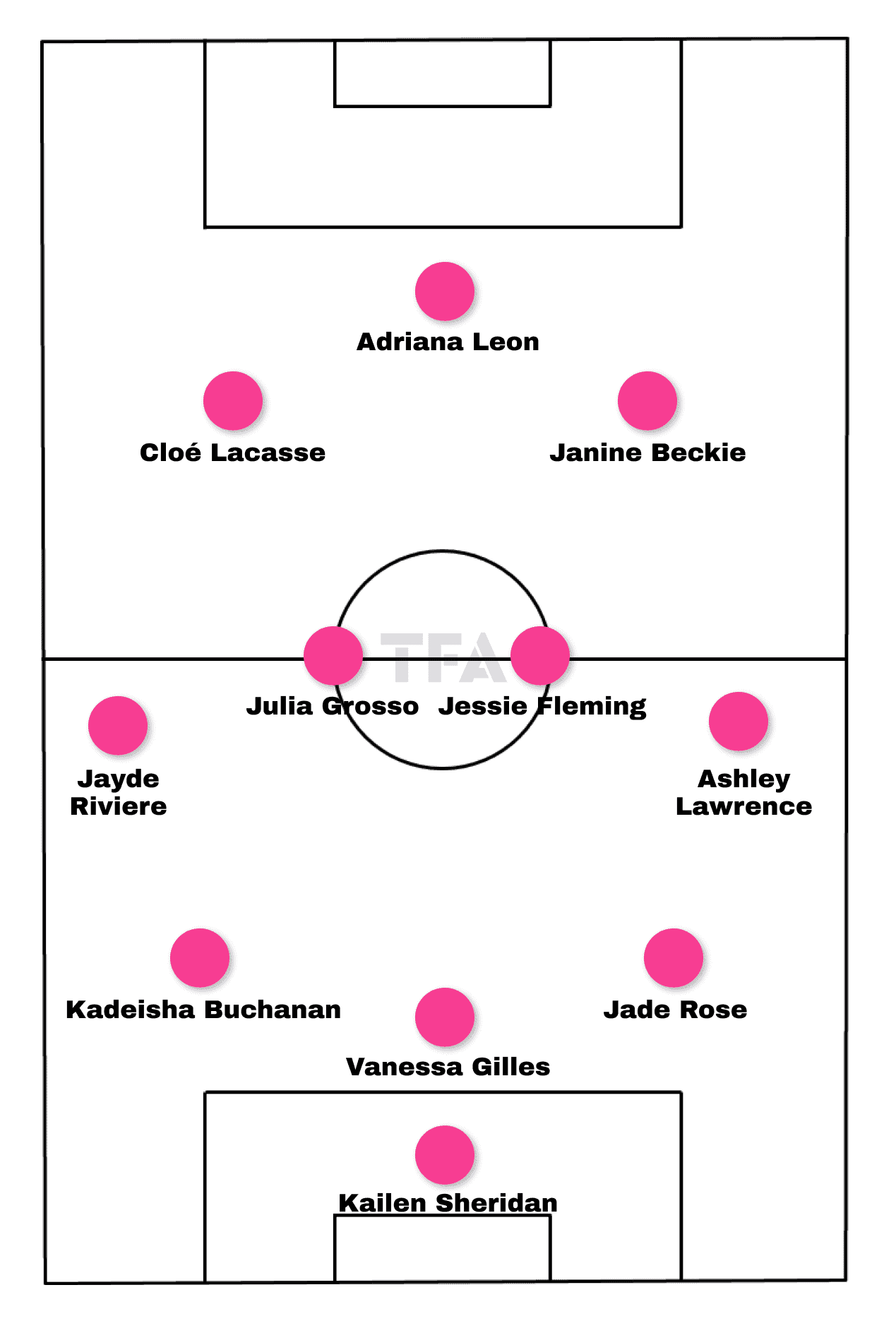
Beverly Priestman’s squad age profile is shown below.
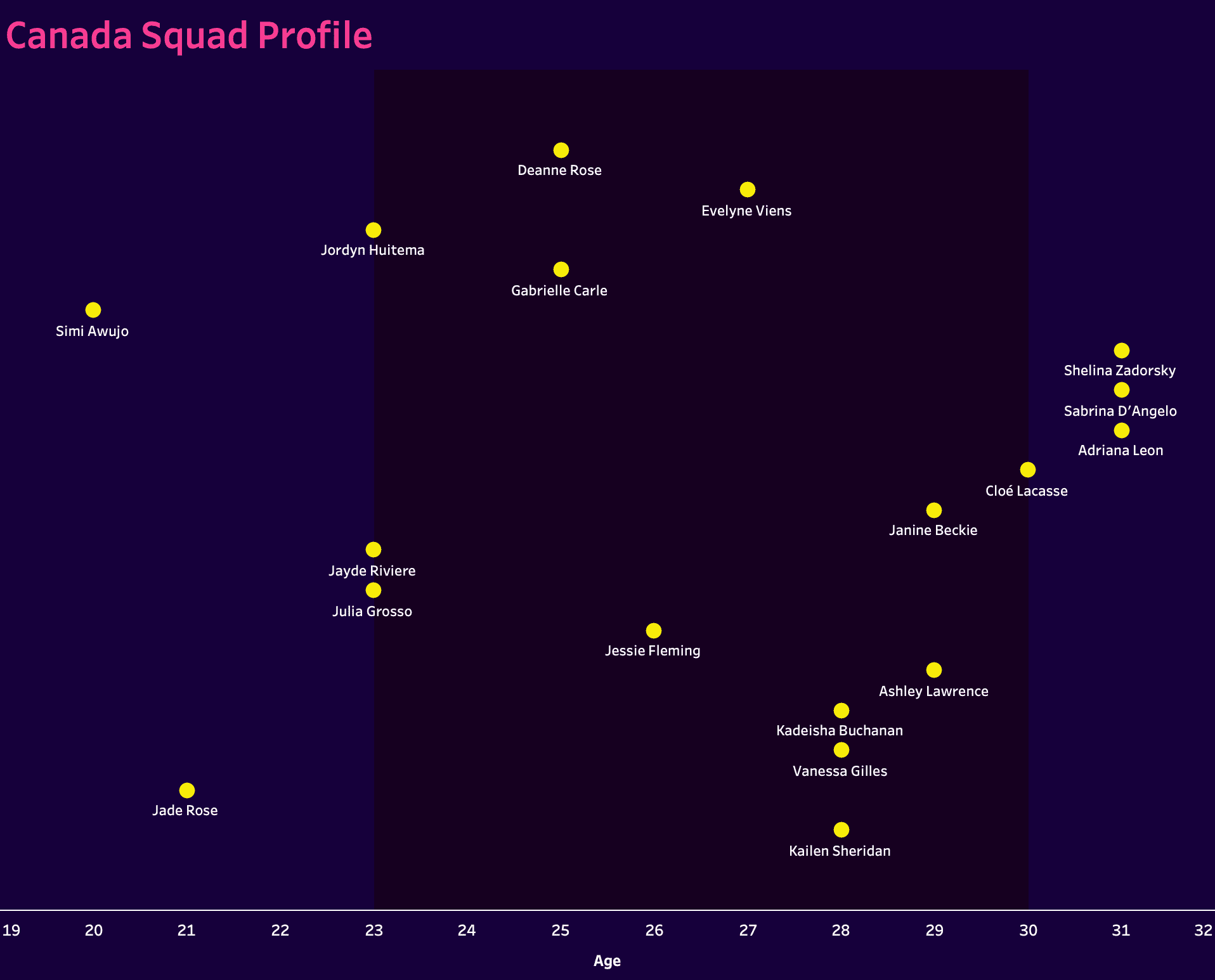
The coach’s choices are a mix of experience and youth.
The expertise represented by Adriana Leon to withstand the pressure and help the rest of the players and the youth like Jayde Riviere make the team more active and quick transitions.
Attacking phase
They prefer the 3-4-3 formation with the ball, especially in the progression and final third phases, in which they spend most of their time.
As shown in the first photo below, they prefer to have three defenders, two midfielders, and five attackers in the five channels.
The two wing-backs stretch the width in the two outer flanks while the centre-forward fills the centre, and the two inside wingers are in the two half-spaces.
However, they prefer not to put their two midfielders in the same horizontal line, asking one of them to stand a little forward in the half-space to be a passing option and to drag the opponent winger, leaving his full-back in a 1-v-2 situation against Canada’s wing-back and inside winger, as shown in the second photo.
However, this midfielder decides to turn and passes the ball to the right side to the inside winger, who drags the full-back to free the right wing-back.
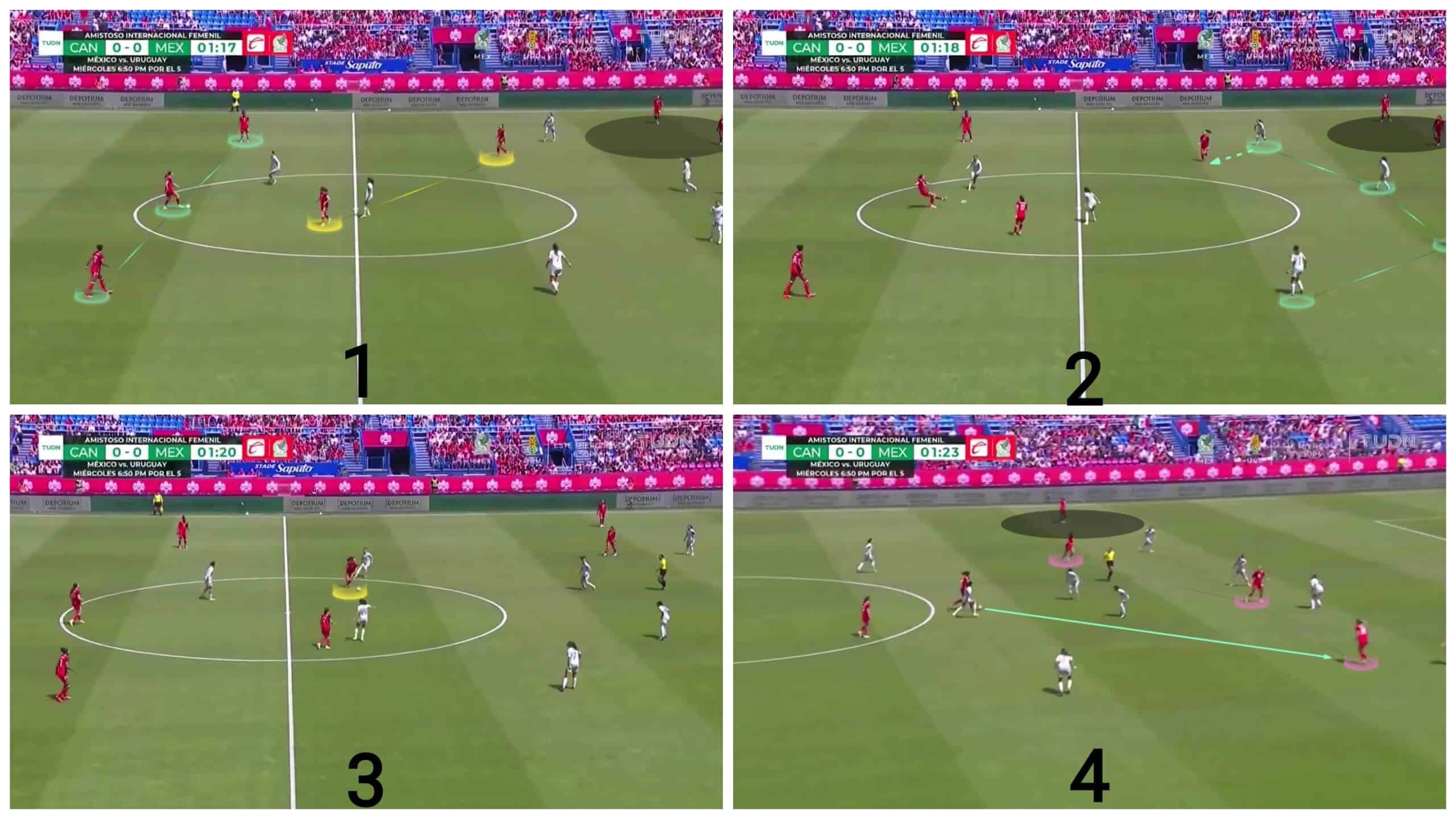
The plan works excellently, as shown in the two photos below.
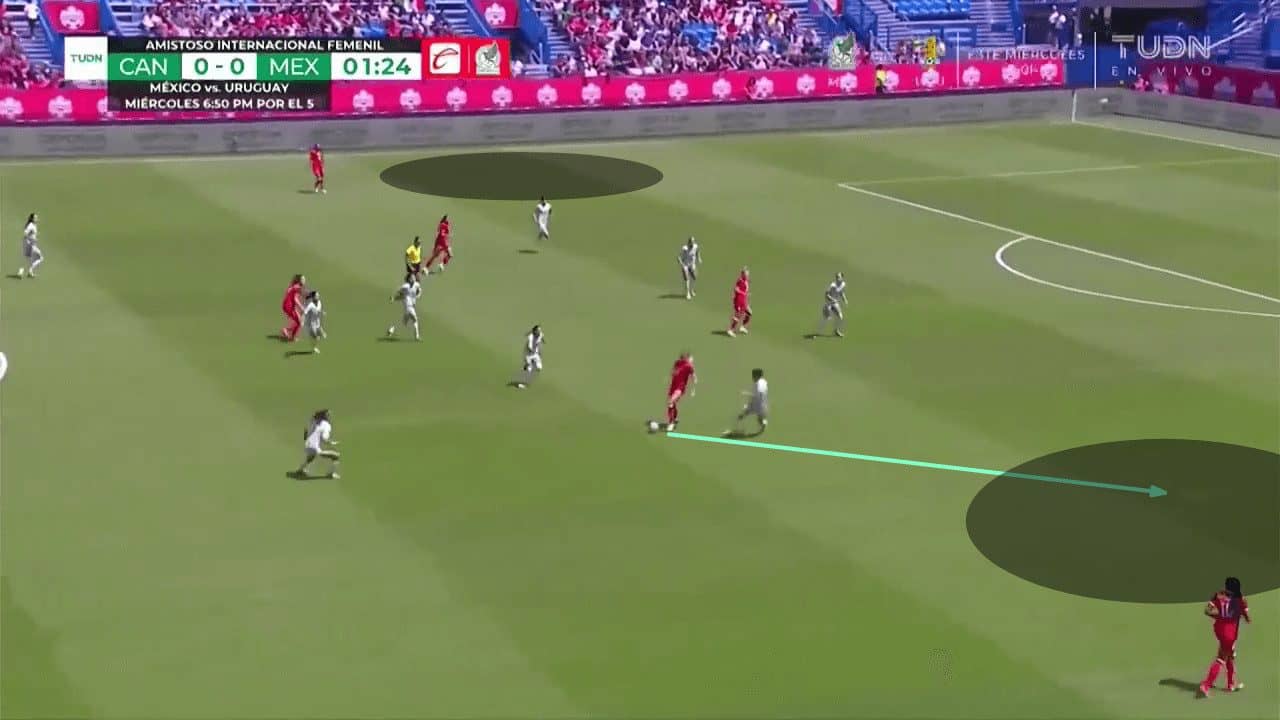

Most of the time, this movement put the opponent’s winger against a tough and essential duty, which is tracking Canada’s wing-back, which is a tough task for a forward player.
What increases the importance of this tracking back is the position of the inside winger who fixes the opponent’s full-back.
Often, wingers can’t do that, as shown in the two photos below.
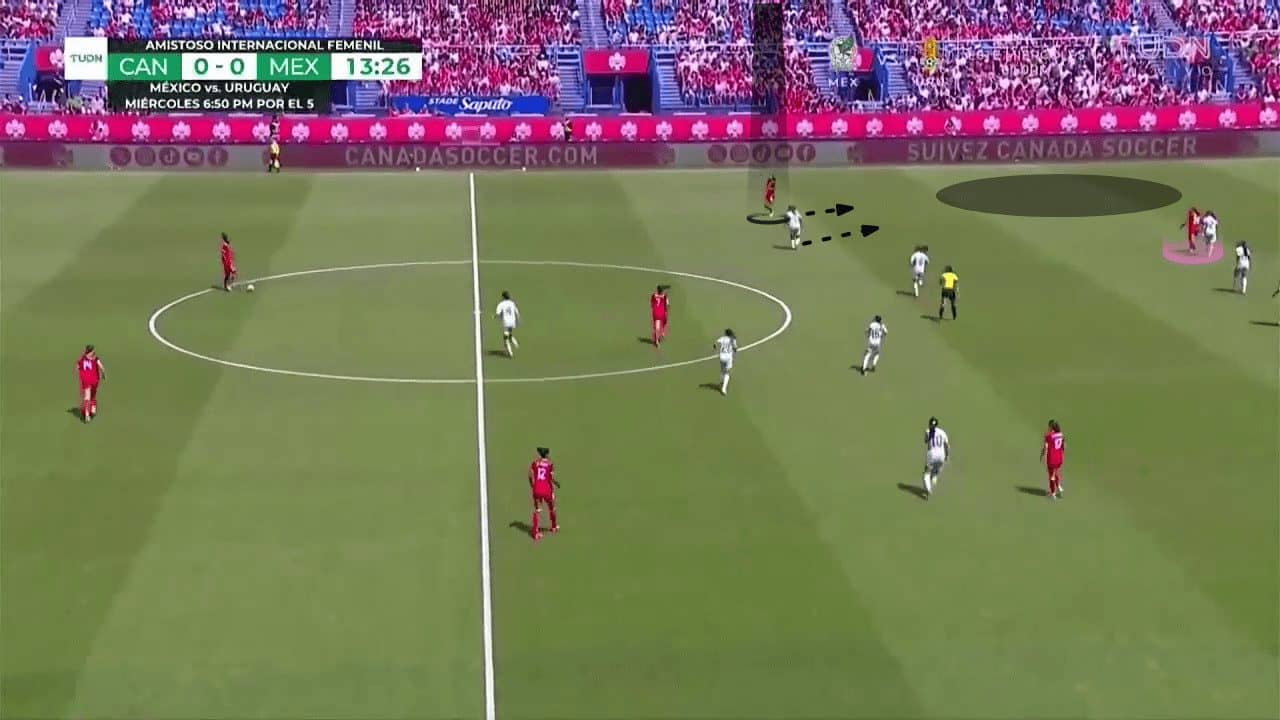
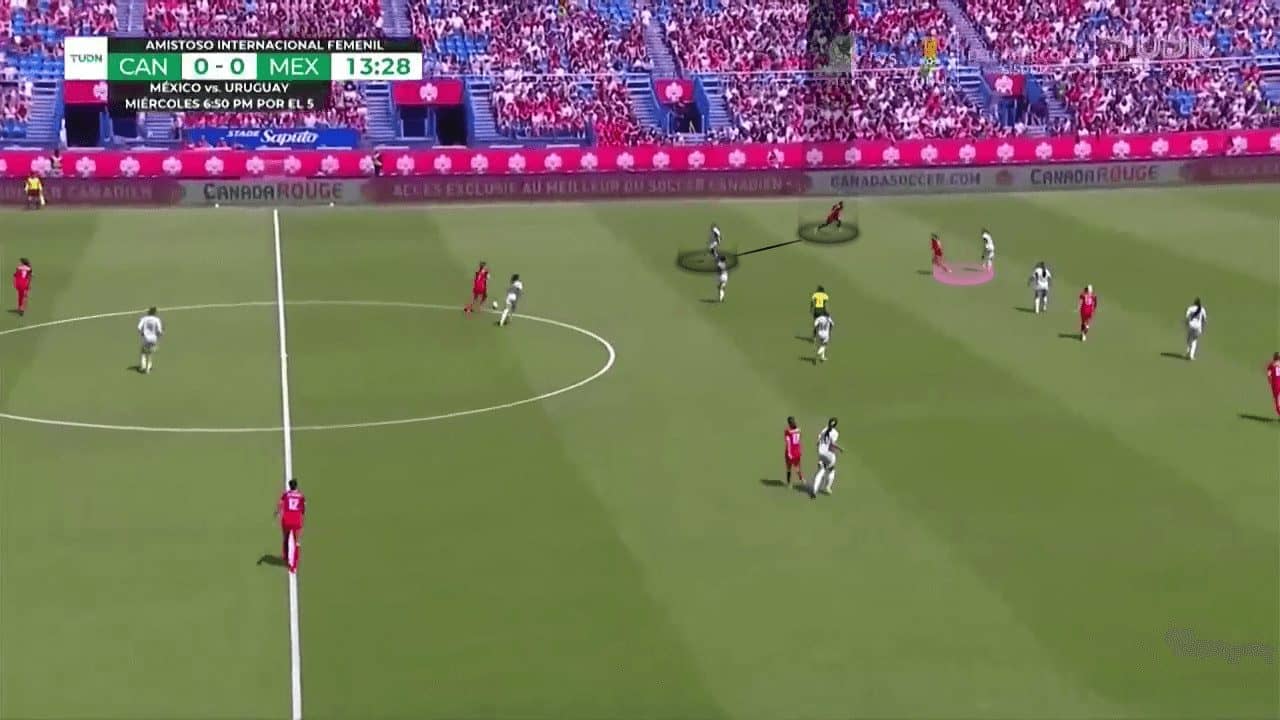
Even if the opponent’s winger decides to implement his duty and tracks back, as in the two photos below, Canada have another solution: They ask the left centre-back to dribble forward until forcing one of the opponent’s two midfielders to face him and then pass the ball to one of his two midfielders who pushes high.
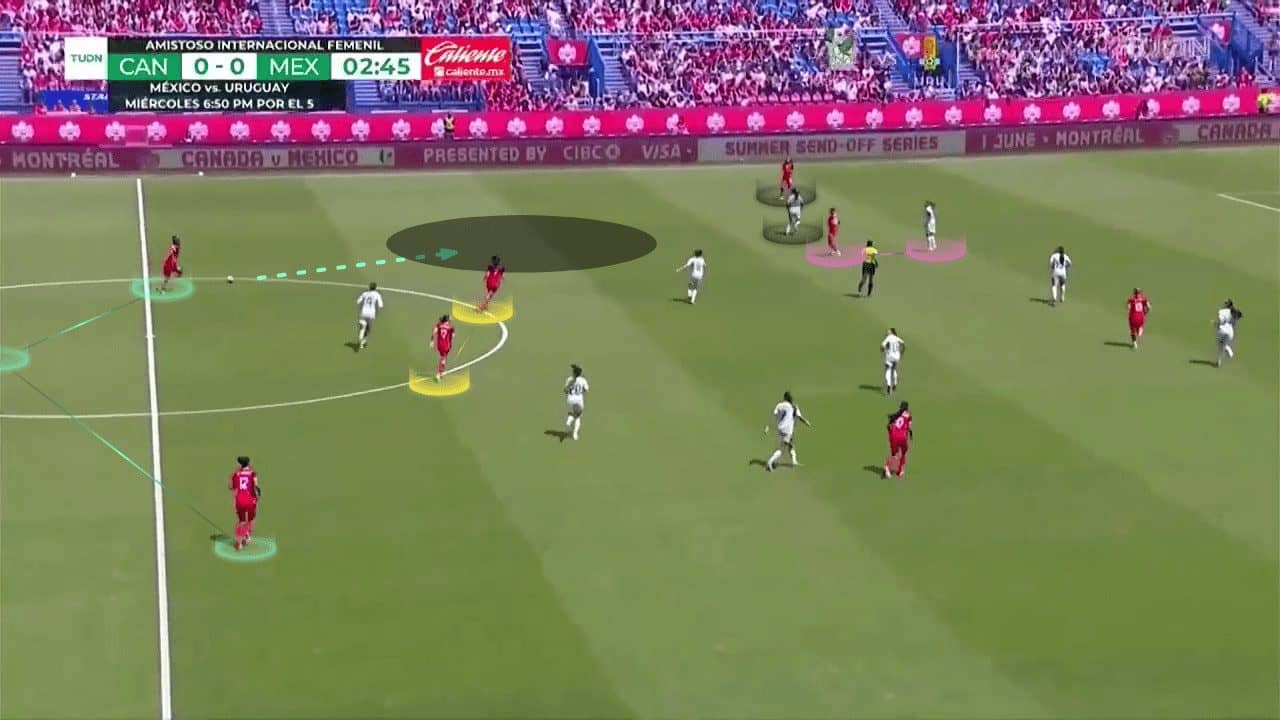
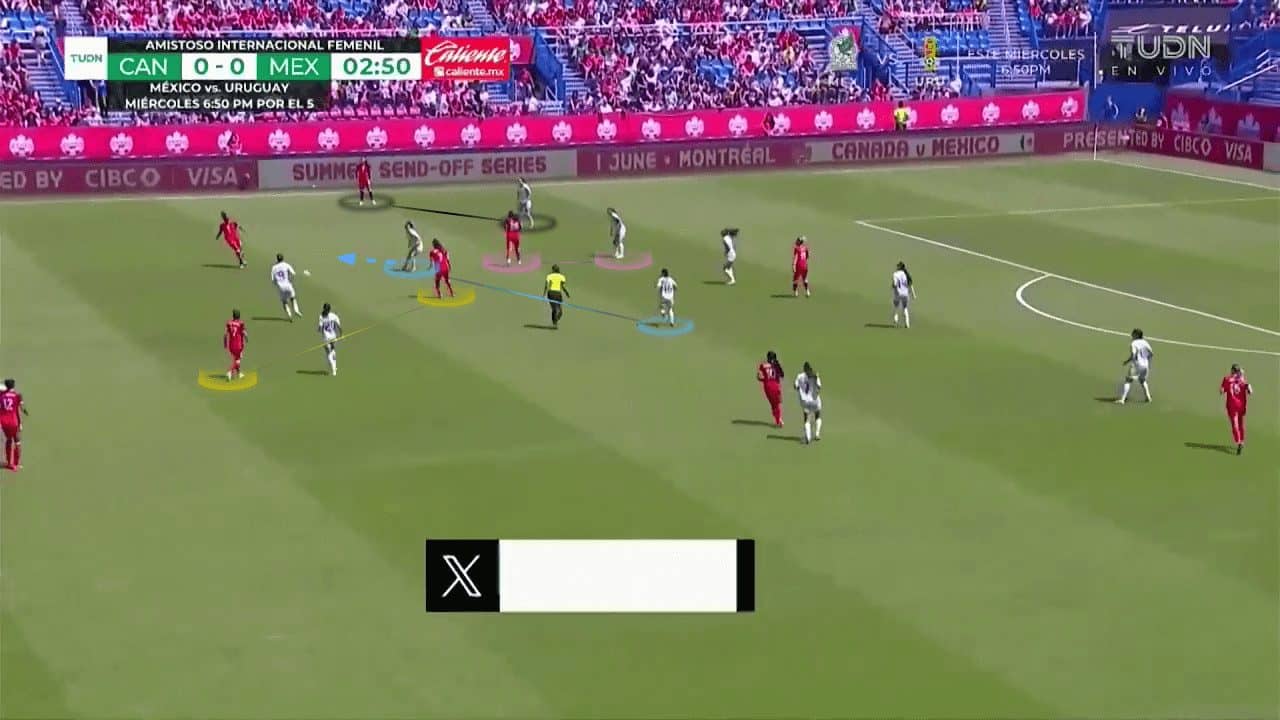
In the build-up phase, they sometimes use the 4-3-3 normal formation depending on the right centre-back, usually Jade Rose, to dribble forward to find a passing option to the centre-forward who drops to receive, having many options, as happened against France’s 4-3-3 pressing shape in the two photos below.
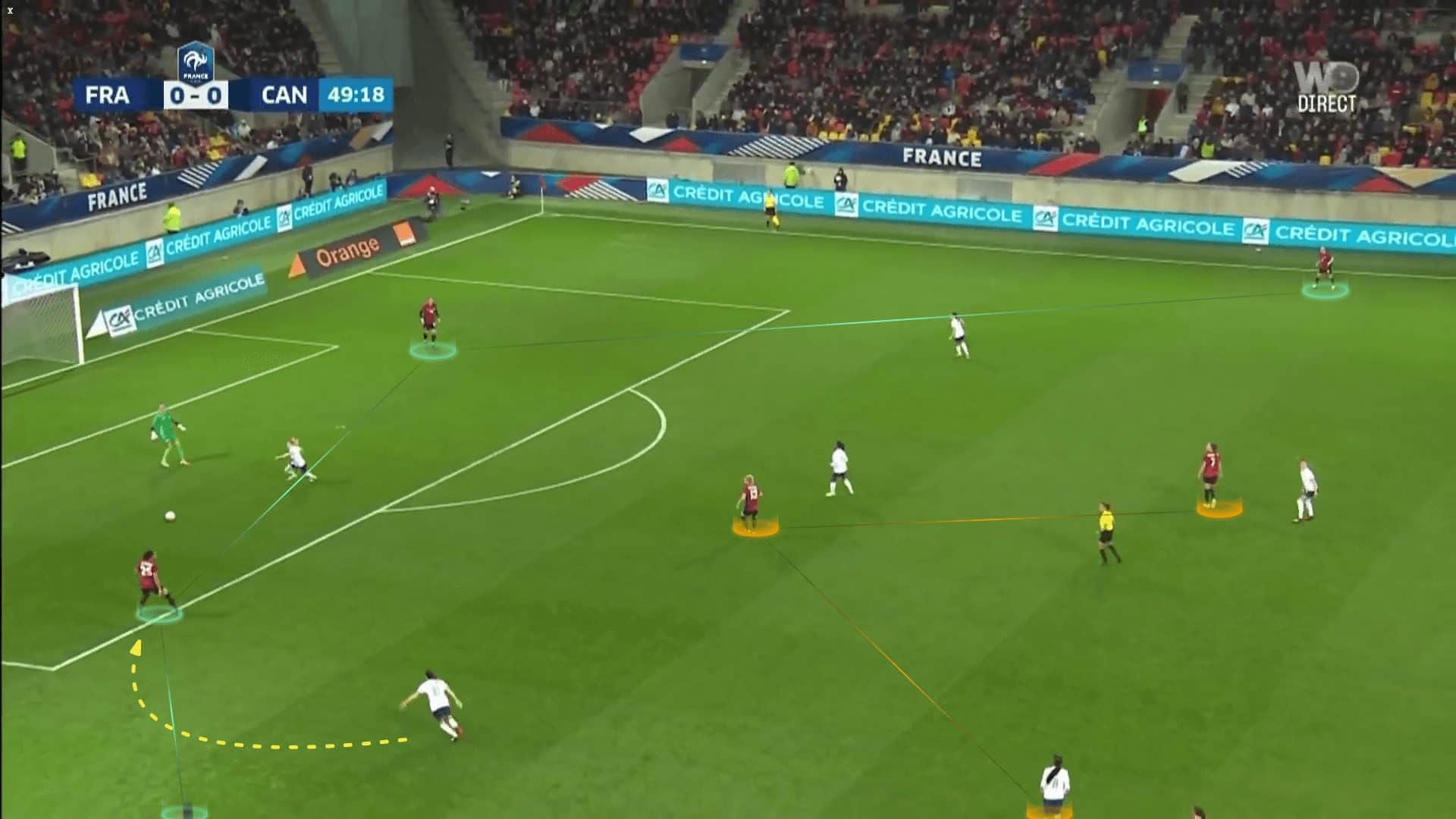

The centre-forward succeeded in hold-up play, having two third-man passing options to the two attacking midfielders, while the right inside winger tried to run into the space behind him, as shown below.
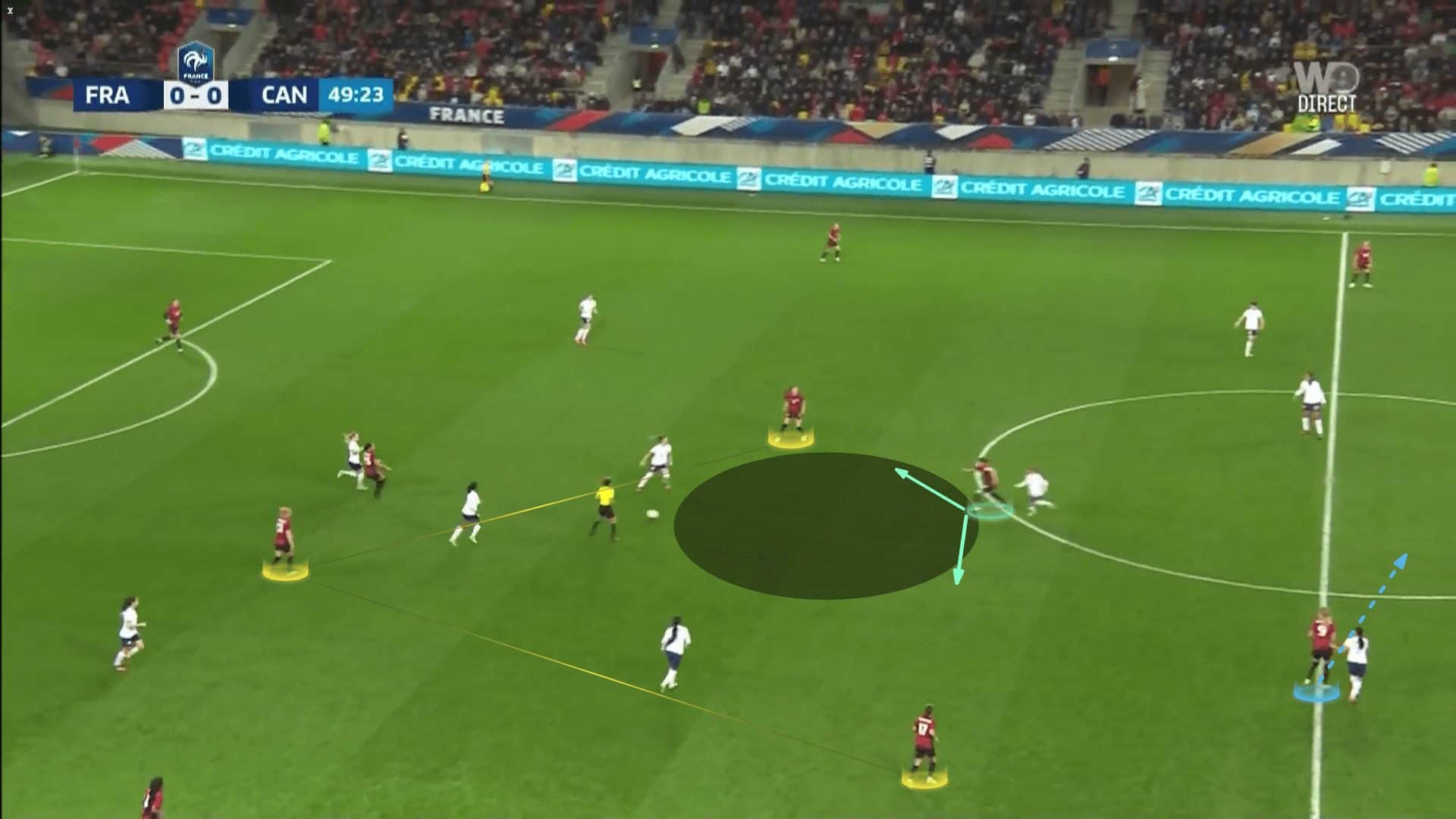
Defensive phase
They prefer to press highly, getting the ball in the opponent’s first third using a 4-3-3 shape, asking the right wing-back, Ashley Lawrence, to be the right midfielder.
As shown in the photos below, they prefer to orient the opponent in a certain direction by asking the inside winger near the ball to run in a curved way to cut the passing lane to the opponent’s right full-back.
At the same time, the centre-forward covers the shadow of the opponent’s six.
When the opponent’s right centre-back is forced toward the inside, the right midfielder goes to the opponent’s left full-back.
They succeeded in cutting the ball and had a dangerous chance after that.
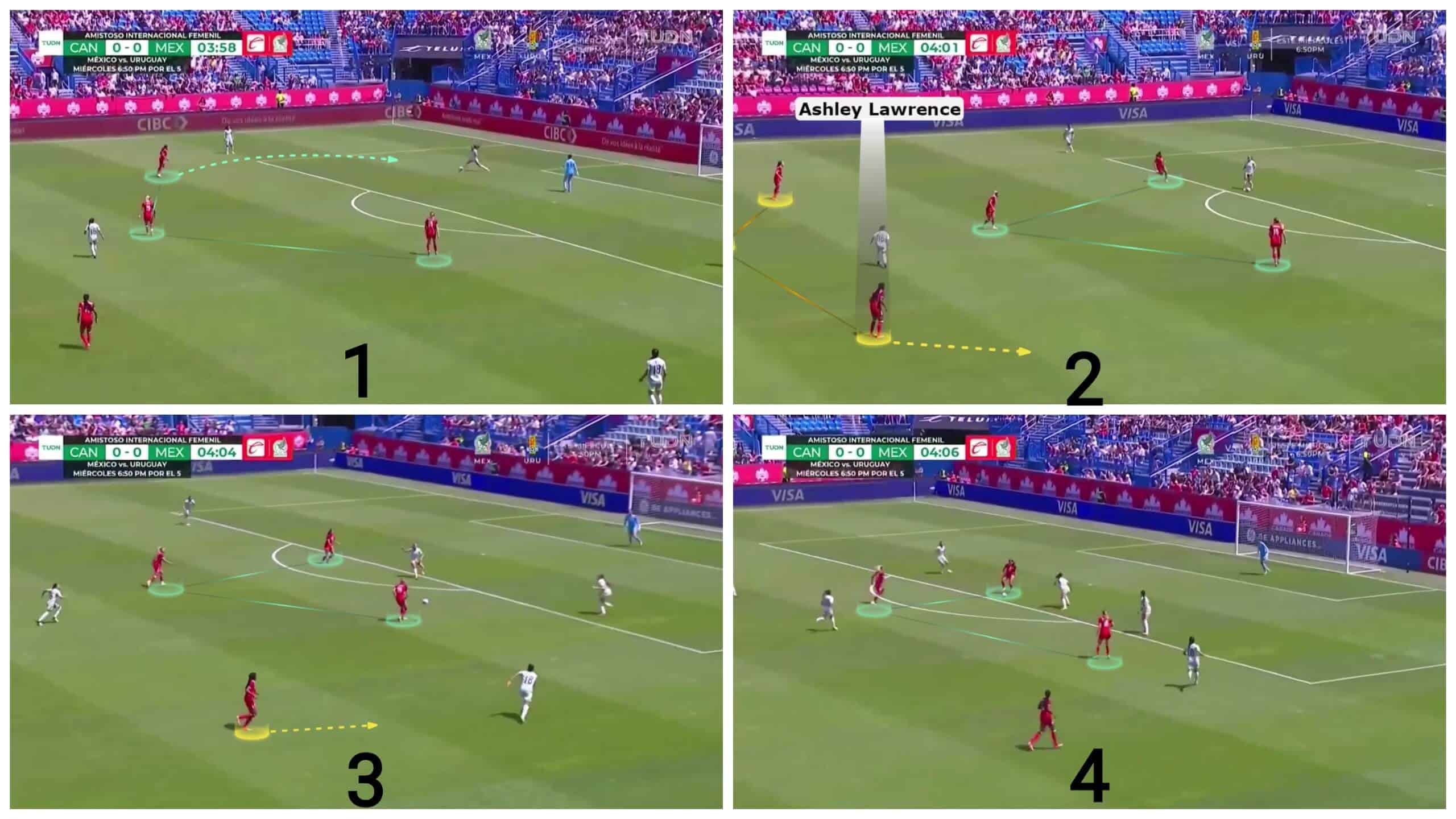
This method also helps them with another thing: having a free midfielder, their six, especially against a 4-3-3 build-up.
Let’s know how!
In the first photo below, the same strategy is implemented by asking the centre-forward to shadow the six, which makes them 3v3 in the midfield without the help of the holding midfielder, who becomes free covering behind them, so if the left inside winger fails to close the passing lane to the opponent’s right full-back, an easy shift happens by asking the left midfielder to press the full-back.
In contrast, the free midfielder behind him goes to the opponent’s eight.
After that, the opponent’s right full-back has no choice of passing.
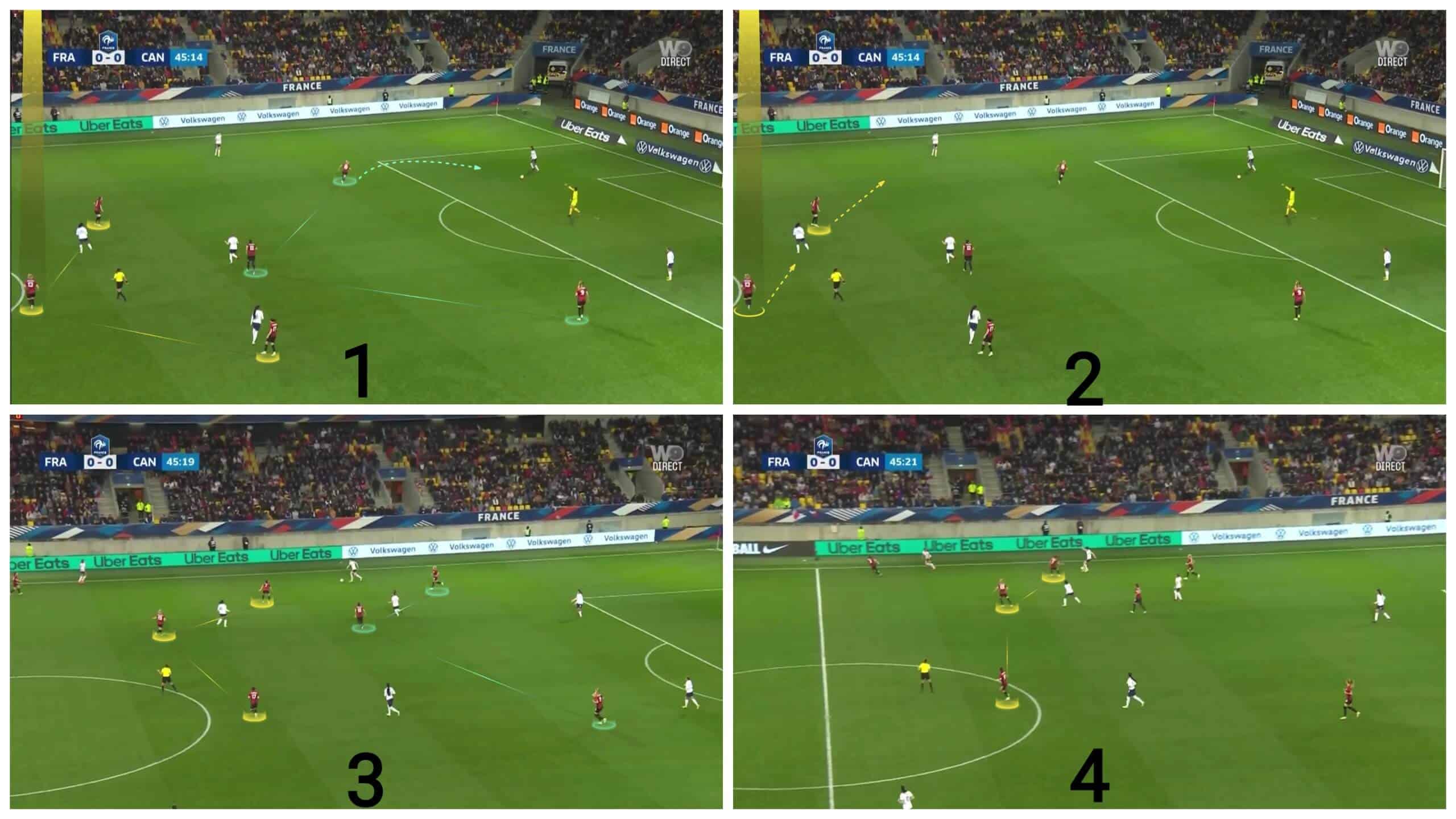
Transitions
Starting with the defending transition, when they lose the ball in the final third, they prefer counter-pressing to get the ball back quickly.
So you can find the right full-back trying to pass the ball to the right midfielder, but the pass is inaccurate.
Three players around the ball go to chase the ball while the far full-back comes back to be three defenders at the back, as shown in the photos below.
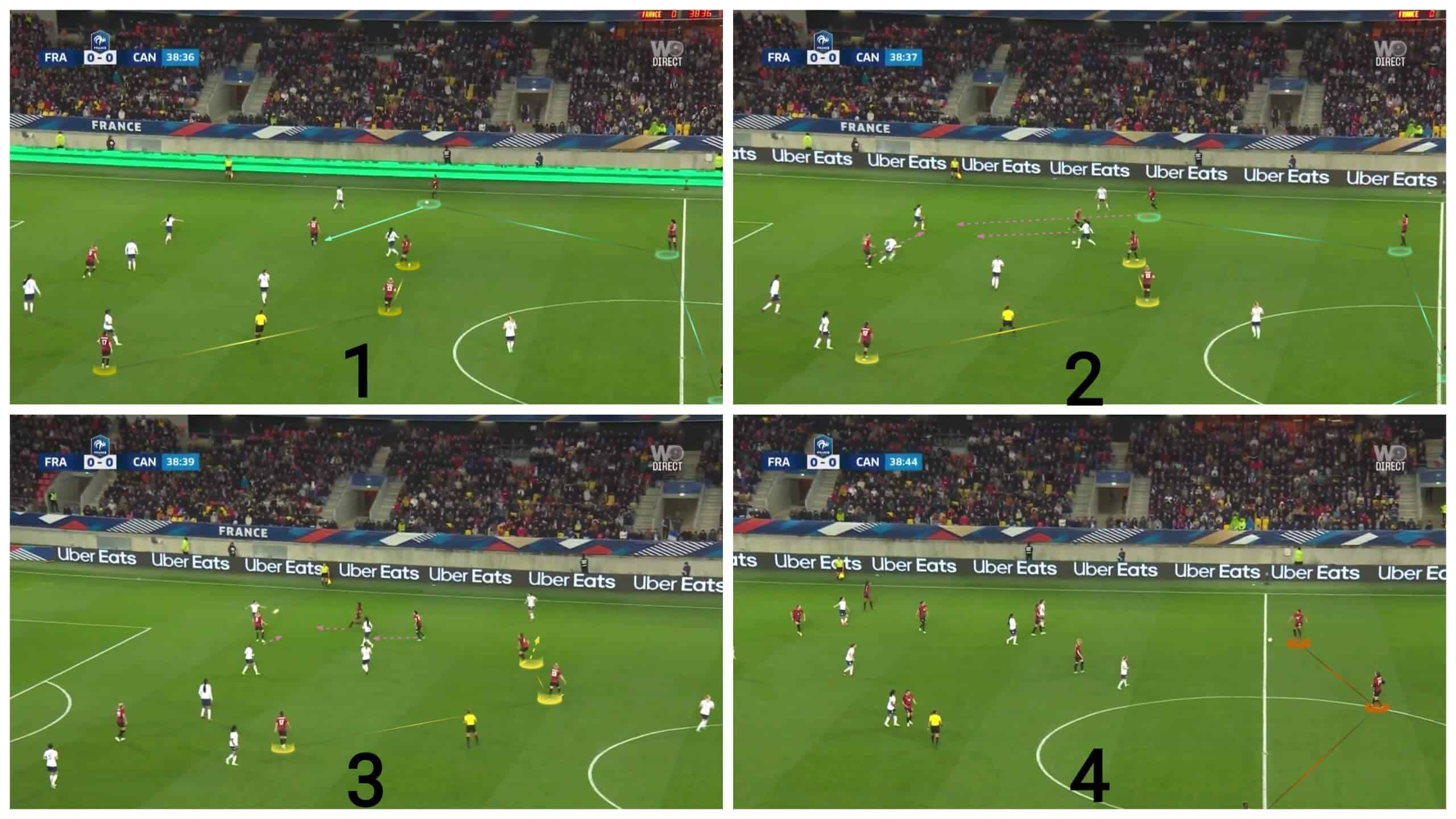
In the attacking transition, they depend heavily on targeting the wide wing-backs quickly before the opponents succeed in reorganising themselves.
As we have explained, they defend with four at the back and attack with only three by asking the left full-back to be the left wing-back and the right full-back to be the right centre-back, so this shift suddenly shocks the opponents, as shown in the two photos below.
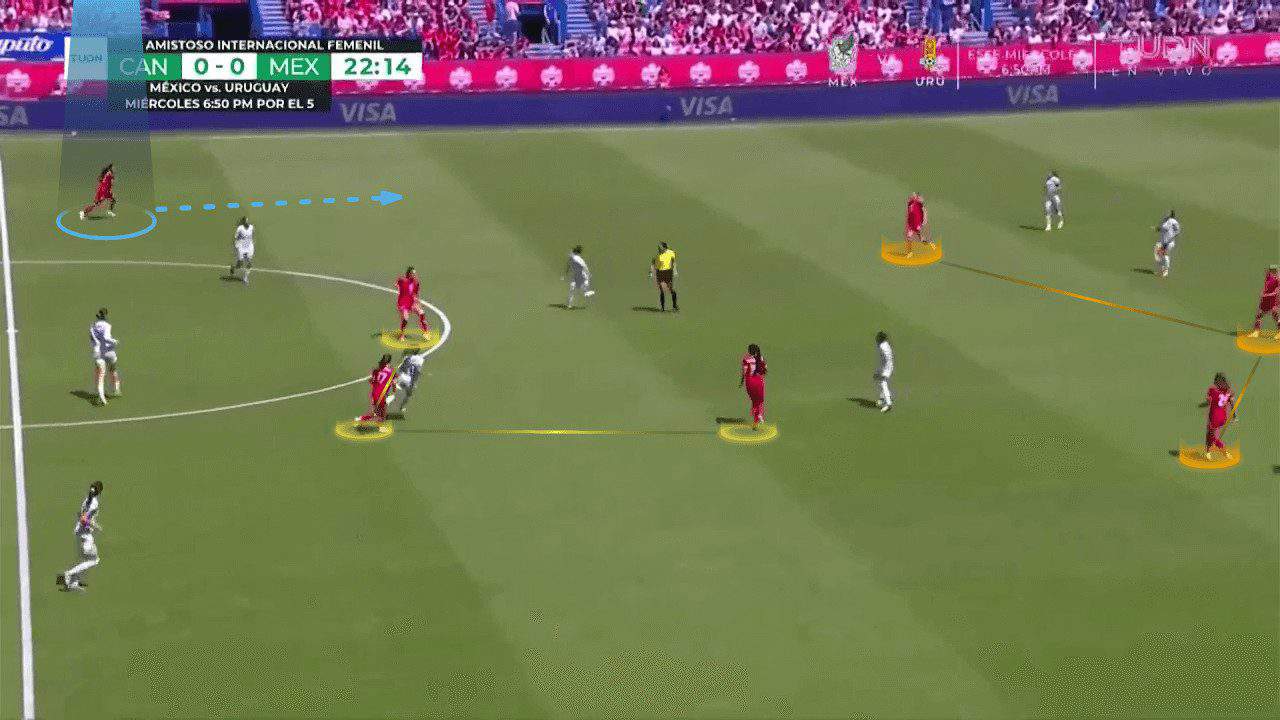
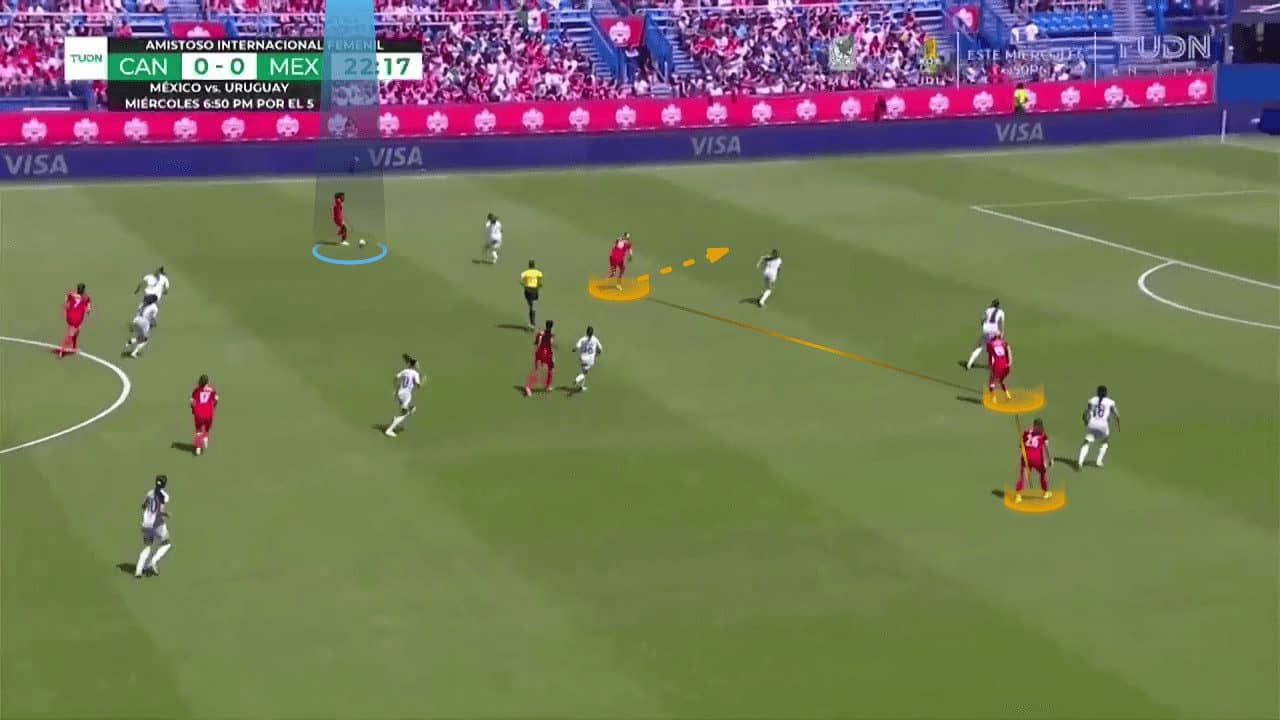
Forwards
Beverly Priestman has many diverse choices in the three forward positions as most of them play in many positions as a striker or a winger, which is good for the team increasing the choices and fluidity in the game.
Still, we think Aston Villa’s player, Adriana Leon, will be the first choice as the centre-forward despite being a winger.
As the right and left inside wingers, we think Janine Beckie and Cloé Lacasse will be the first choices, considering that Jordyn Huitema, Evelyne Viens and Deanne Rose may fight for a place in the starting XI.
Jordyn Huitema can also play as a ten, which is a good option in case the structure needs to be changed tactically.
Midfielders
Regarding the two flying wing-backs, the coach switched between wingers and full-backs to achieve balance, defend or attack regarding the opponent and the match conditions.
Still, we think that Ashley Lawrence and Jayde Riviere will probably be the first choices.
Still, Janine Beckie can also play as a left wing-back, and she performed well in this position.
The first choices as the two central midfielders will remain Jessie Fleming and Julia Grosso, but we think that Simi Awujo may fight Grosso for the second position in midfield next to Fleming.
Defenders
Beverly Priestman relies on three centre-backs, who will probably be Jade Rose, Vanessa Gilles, and Kadeisha Buchanan, from the right to the left.
Shelina Zadorsky is also a good option on the bench.
We should mention that they are diverse: Jade Rose can play as a normal centre-back in four or three at the back, Vanessa Gilles is the strongest defensively, and Kadeisha Buchanan is brave enough to dribble forward.
Key player
Chelsea‘s star, Ashley Lawrence, may be their key player because of her technical and tactical quality.
She can play as a right wing-back in attacking and a right midfielder during pressing.
She can also play as a left full-back with good accuracy in crossing with her left.
Her technical strengths are her speed, runs, dribbling, and crossing.
In the photos below, you can see her as a flying right wing-back.
She has an intelligent and fast run and then sends a good cross, but the striker can’t control the ball.
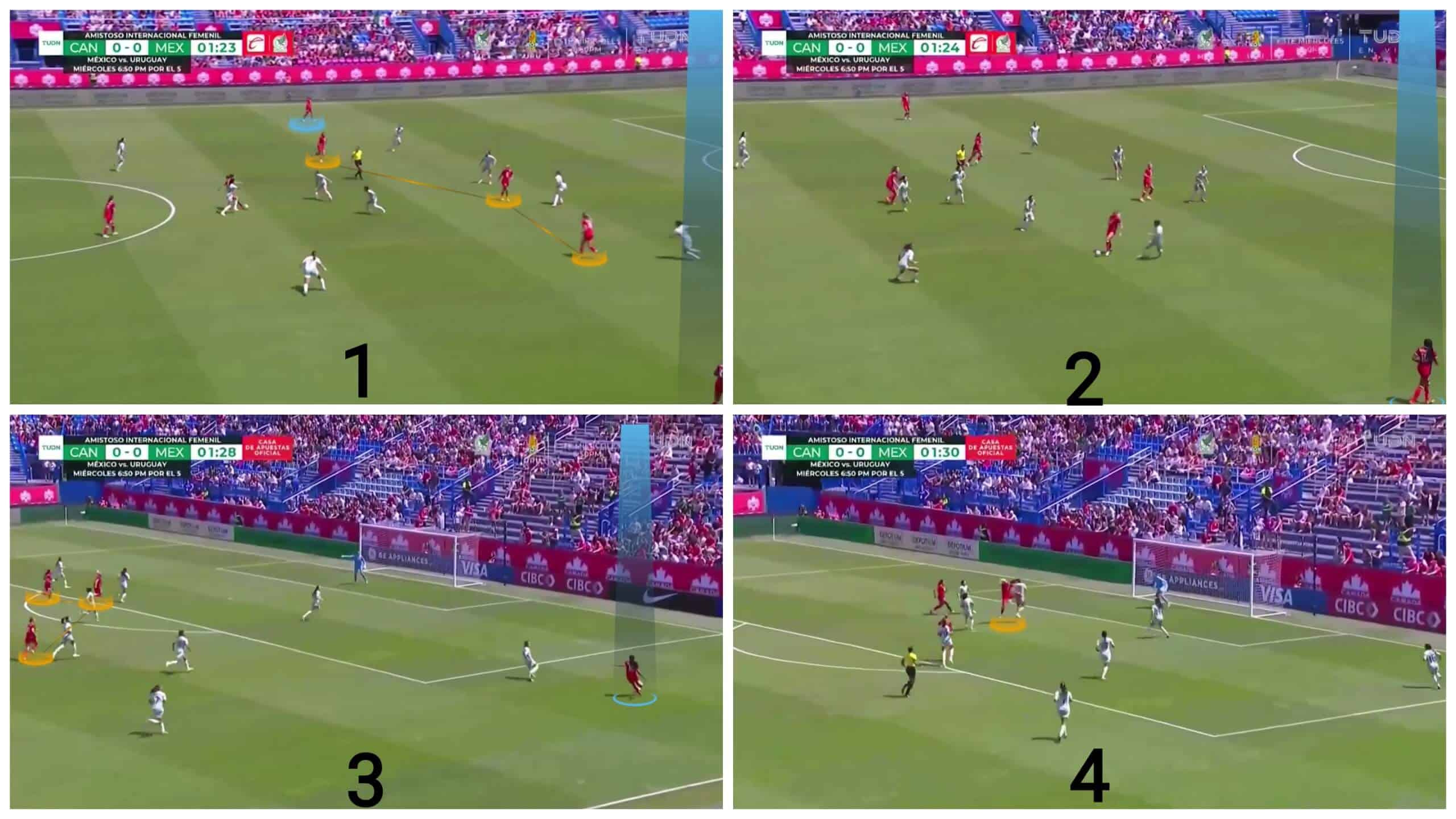
In the photos below, it is clear that she can fill the left side with the same quality.
She can intelligently choose the time of the run, and she has the ability to run quickly and send an accurate cross with the left.
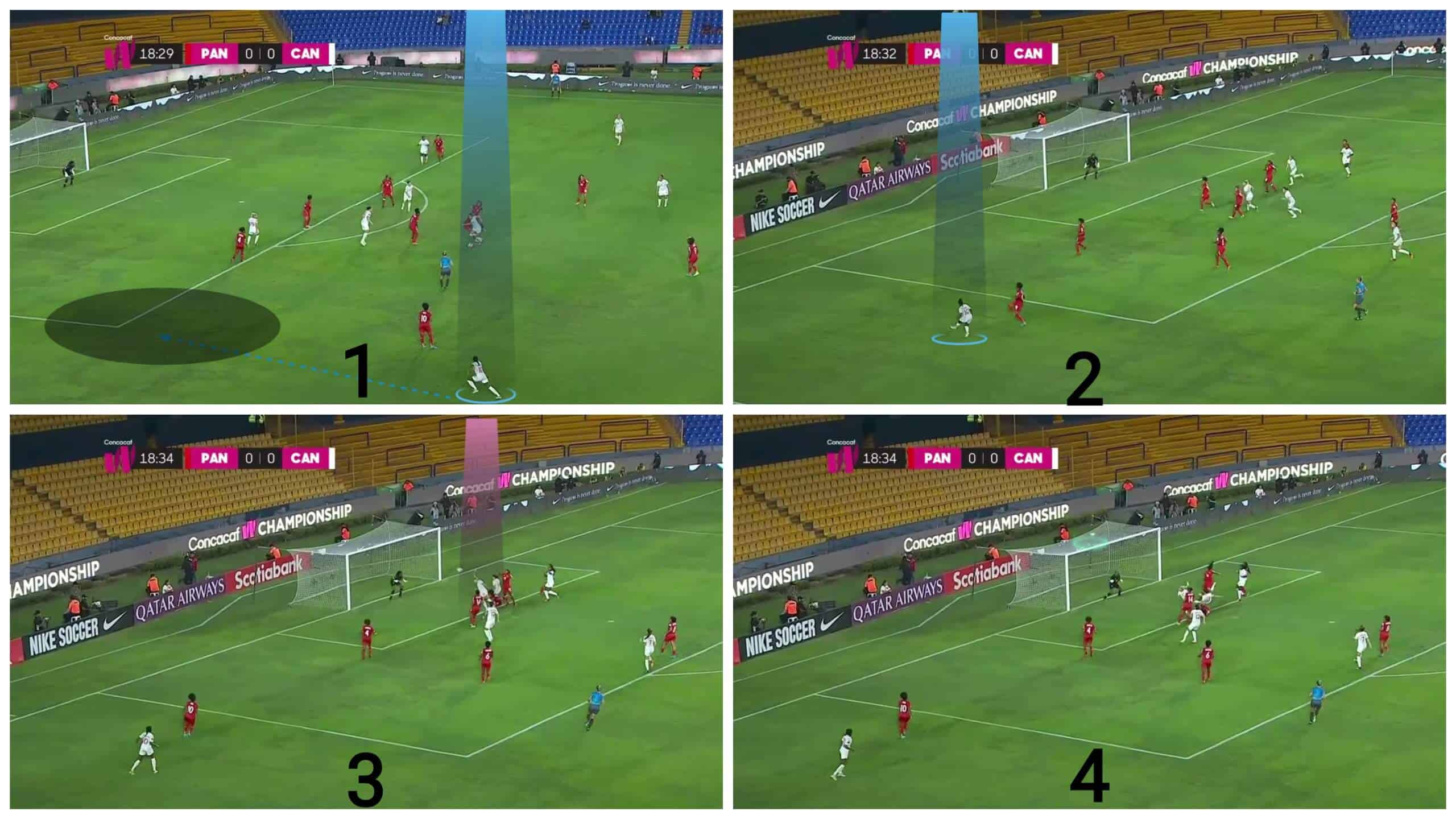
As evidence of her dribbling skill, you can see the distance she carries the ball in the first two photos below, so she is an effective option during transitions.
After that, she passes the defender, trying to shoot with her left, but it hits the defender.
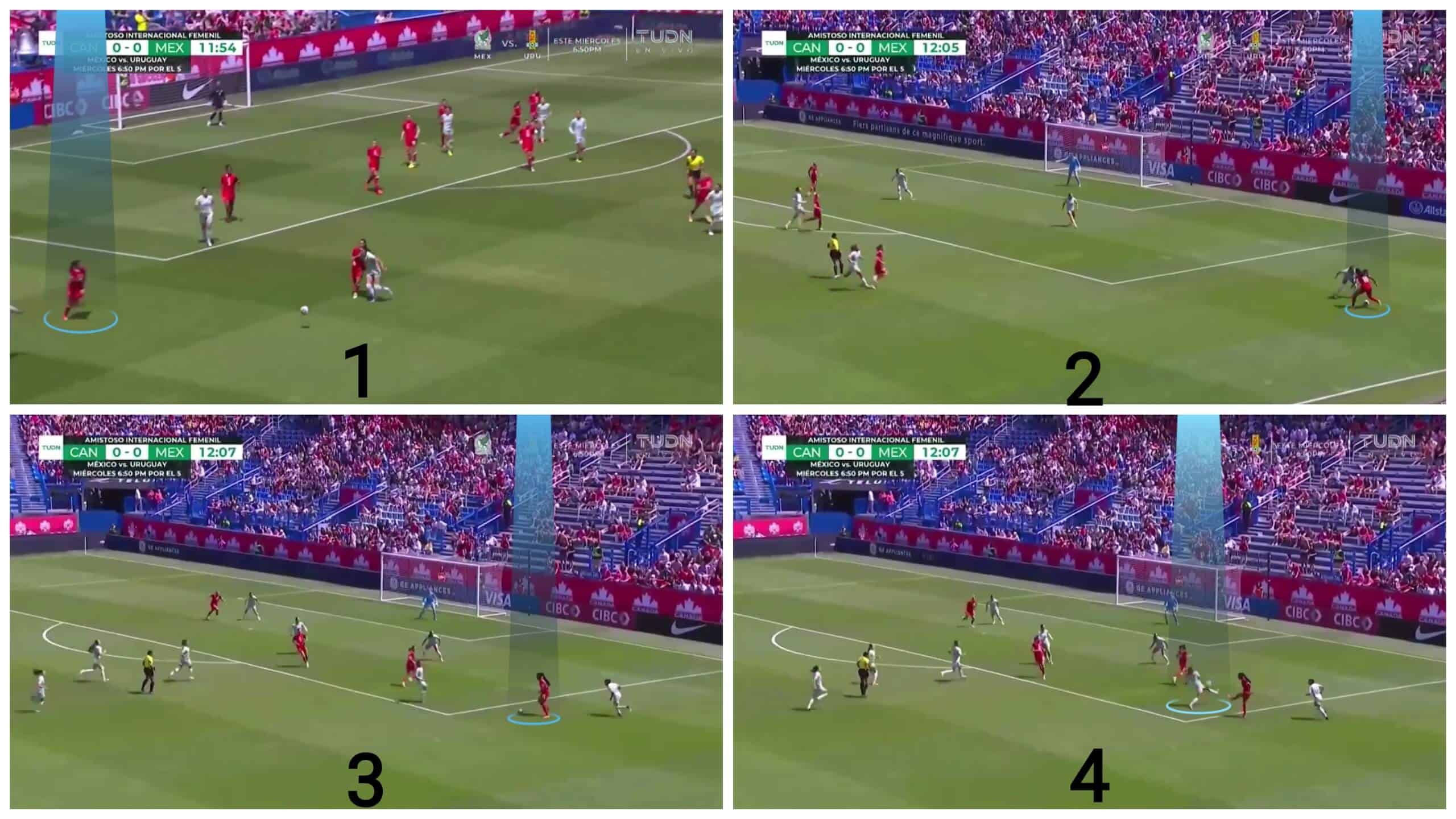
Moreover, she has good vision and excellent decisions to see the gaps in the defence line and passes it from the first touch, as shown in the two photos below.
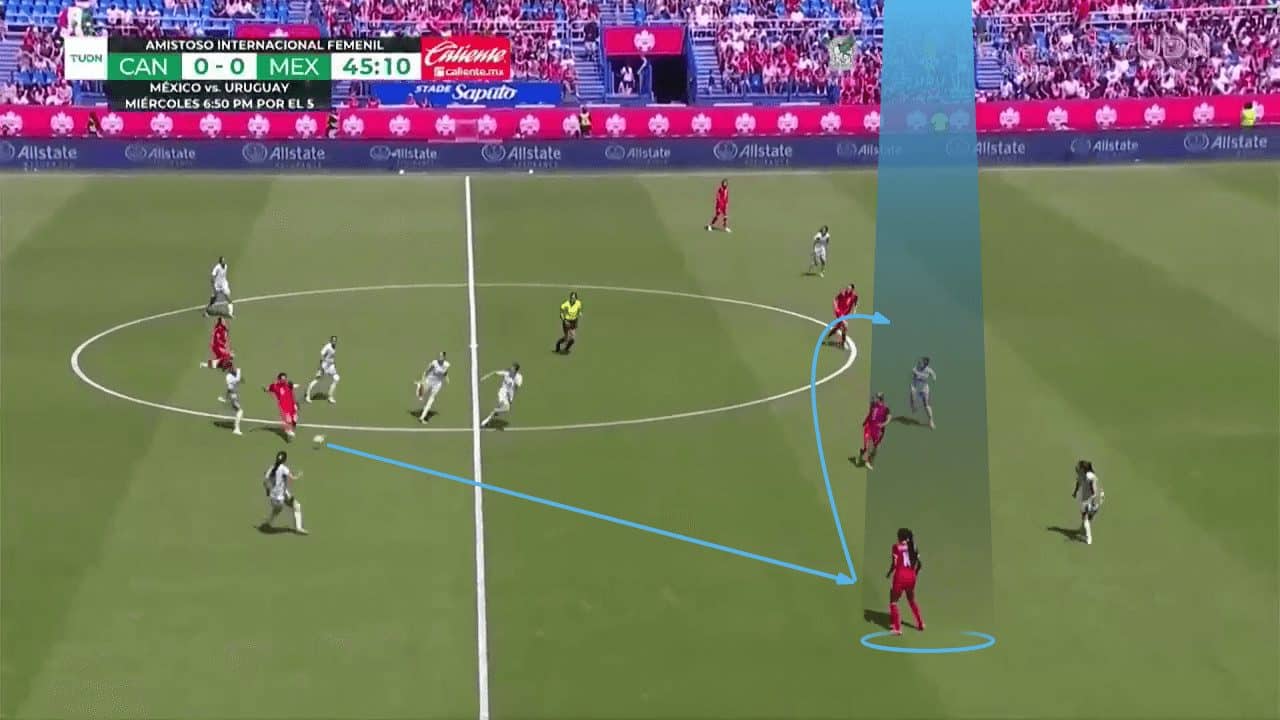
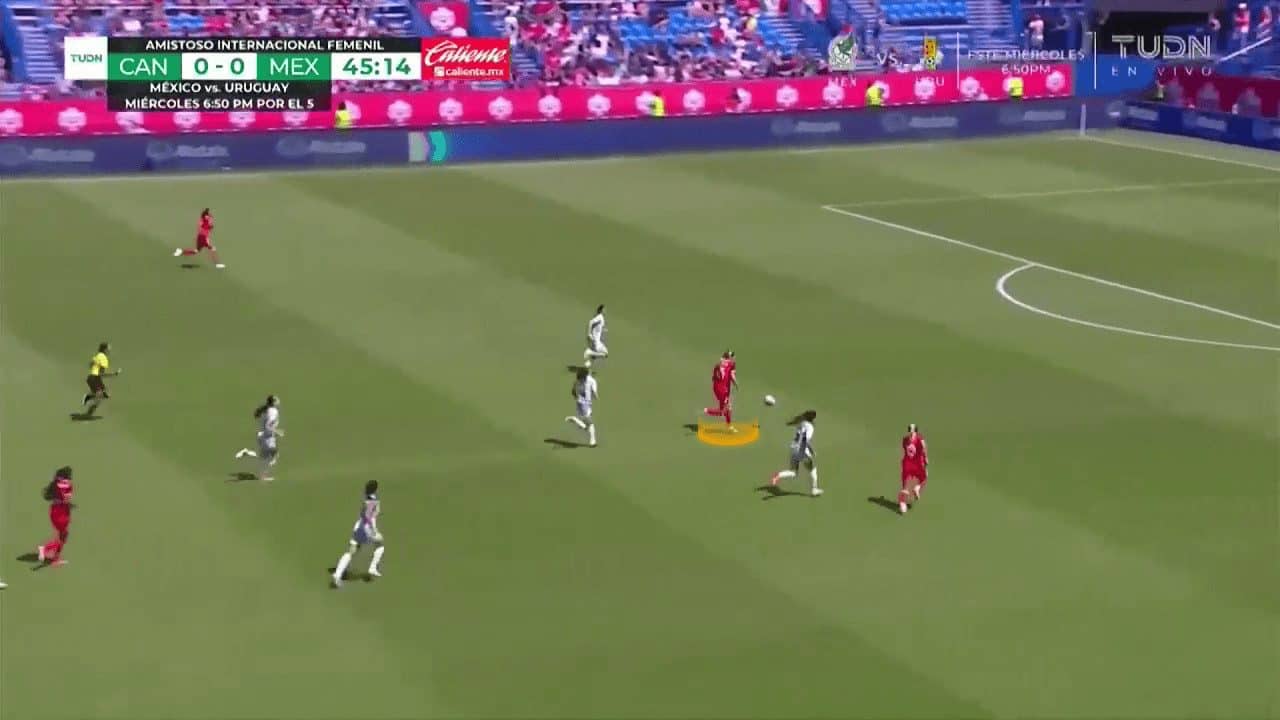
Tournament Prediction
It is difficult to predict results in such a big event.
Still, given their being eighth, above all the teams in the group except France, in the latest World Ranking, their gold medal at Tokyo 2020 and their good performance in different phases, as we have explained in this analysis, we may predict that they will pass the group stage, especially as the top-two teams in each group and the two best third-place teams advance to the knockout stage — Canada will likely face tough competition from Colombia for second spot in this group, with relying on being one of the best third-placed sides a real possibility.
After that, they hope to keep their gold medal or get a silver or bronze medal, at least.
However, their path after the group stage may immensely affect the result, and it has many possibilities.

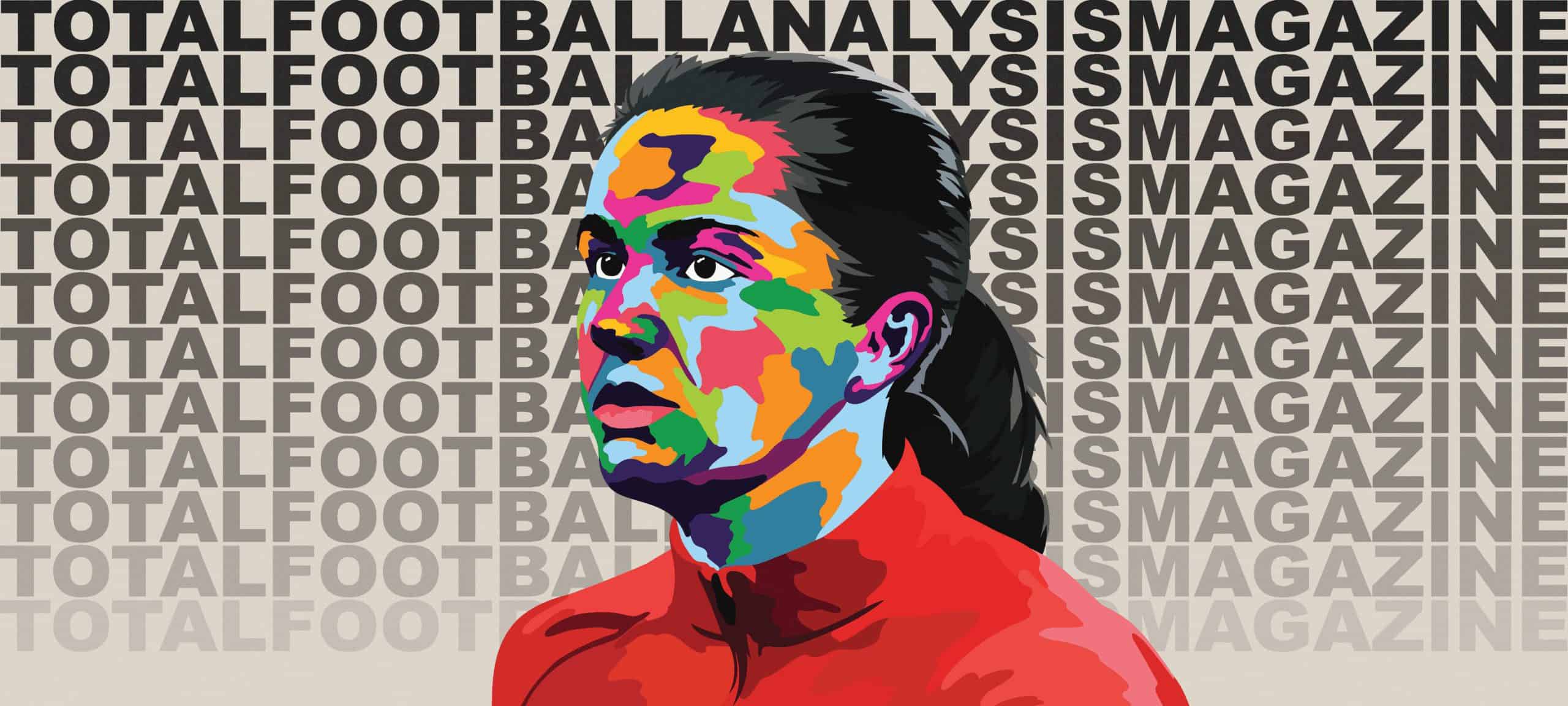



Comments